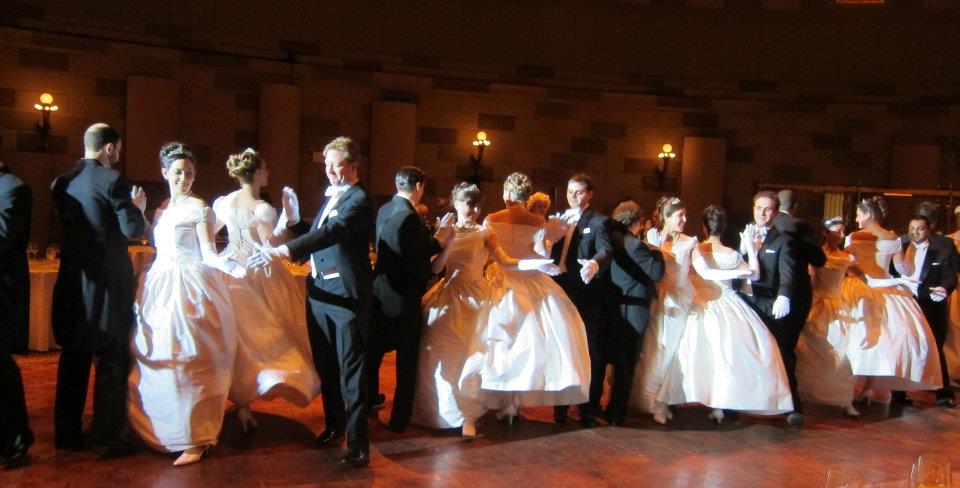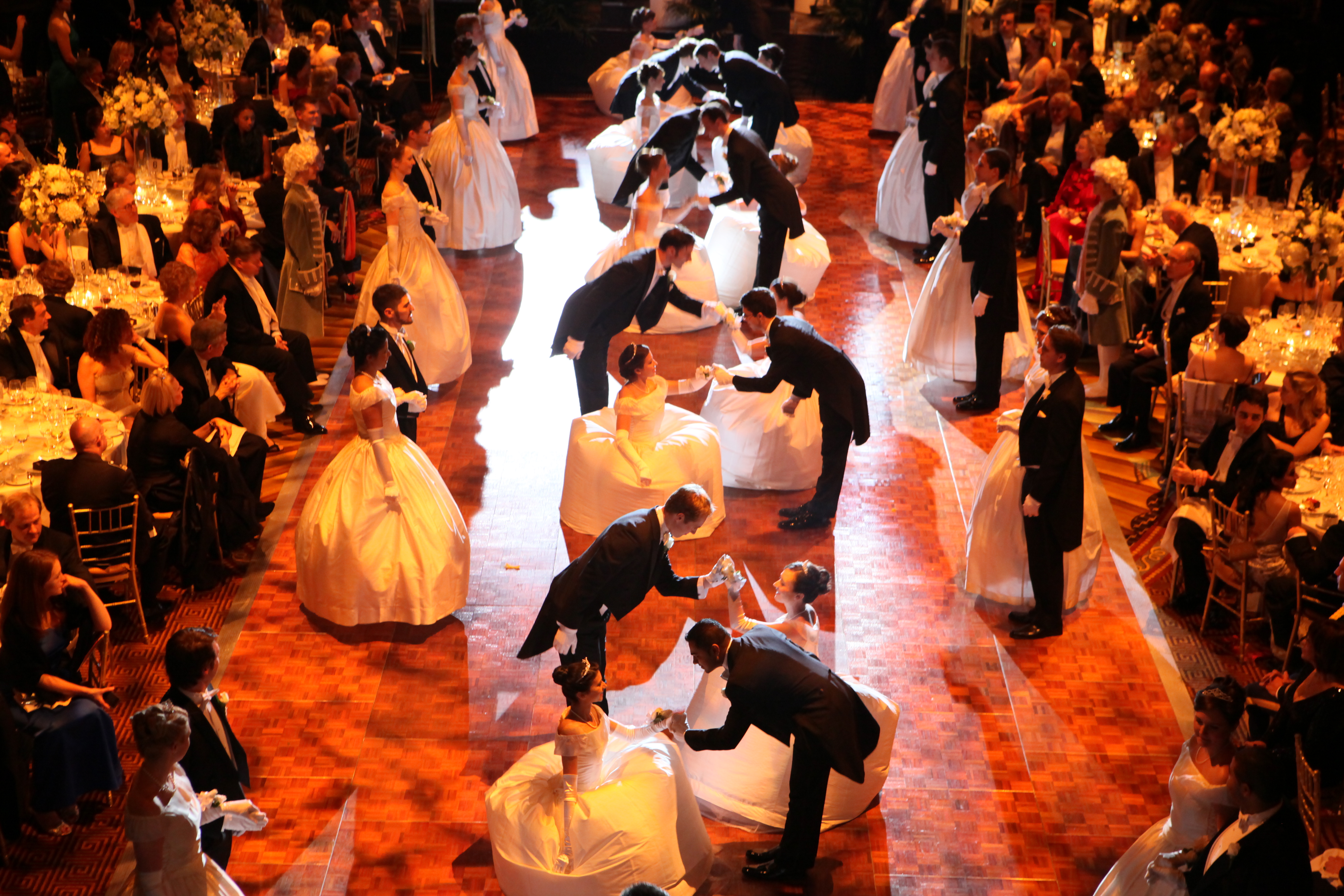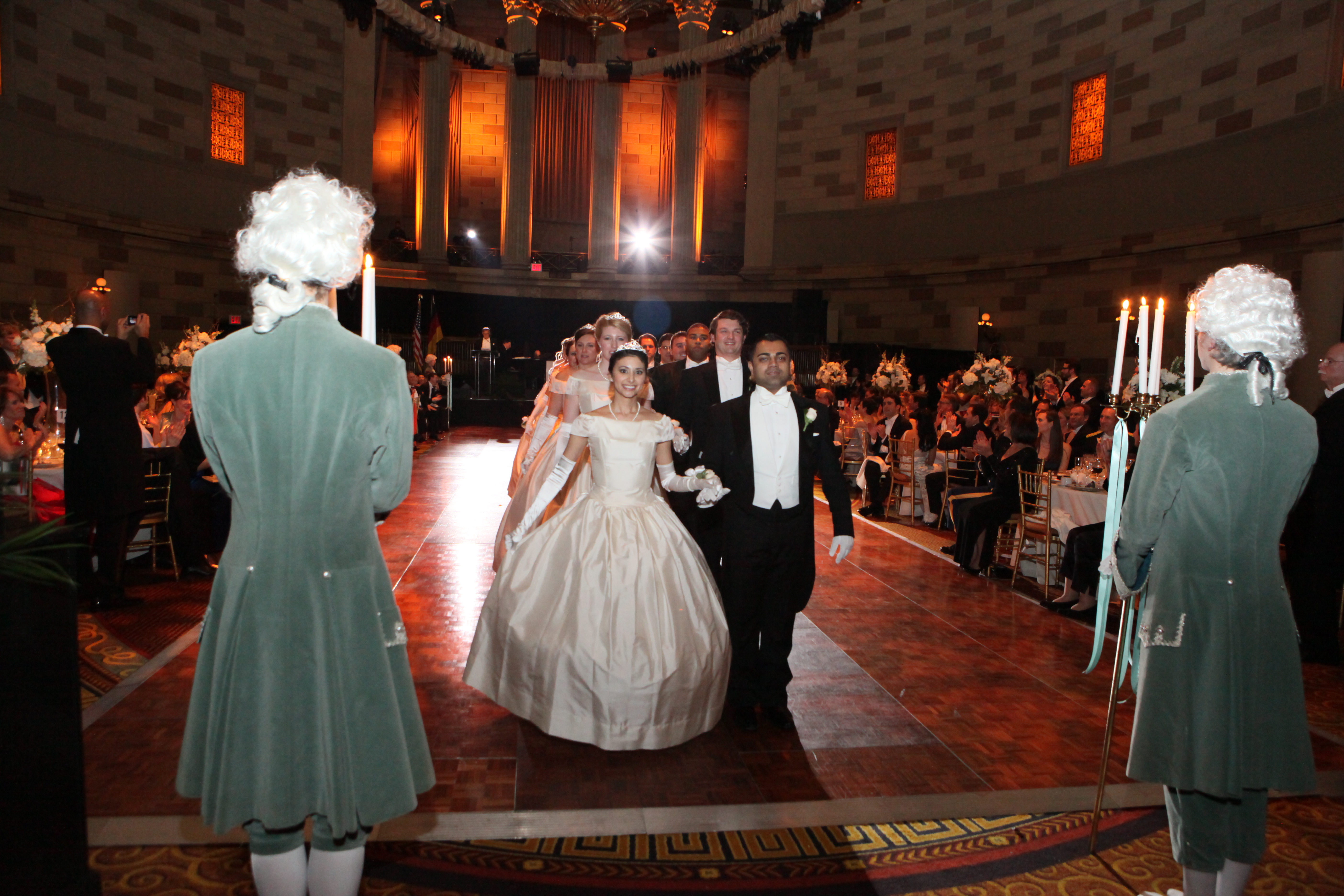Quadrille
See also: Categories: Dances, History, Ballroom, DanceSport
Definition
Overview
The Lancers, a variant of the quadrille, became popular in the late 19th century and was still danced in the 20th century in folk-dance clubs. A derivative found in the Francophone Lesser Antilles is known as kwadril, and the dance is also still found in Madagascar.The quadrille consists of a chain of four to six contredanses, courtly versions of English country dances that had been taken up at the court of Louis XIV and spread across Europe. Latterly the quadrille was frequently danced to a medley of opera melodies.
History
The term quadrille originated in 17th-century military parades in which four mounted horsemen executed square formations. The word probably derived from the Italian quadriglia (diminutive of quadra, hence a small square).The dance was introduced in France around 1760: originally it was a form of cotillion in which only two couples were used, but two more couples were eventually added to form the sides of a square. The couples in each corner of the square took turns, in performing the dance, where one couple danced, and the other couples rested. The "quadrille des contredanses" was now a lively dance with four couples, arranged in the shape of a square, each couple facing the center. One pair was called the "head" couple, the adjacent pairs the "side" couples. A dance figure was often performed first by the head couple and then repeated by the side couples. Terms used in the dance are mostly the same as those in ballet, such as jeté, chassé, croisé, plié and arabesque.
Reaching English high society in 1816 through Lady Jersey, the quadrille became a craze. As it became ever more popular in the 19th century it evolved into forms that used elements of the waltz, including The Caledonians and The Lancers. In Germany and Austria dance composers (Josef Lanner and the Strauss Family) composed for the quadrille. Its popularity made it a metaphor, the "stately quadrille", of the constant formation of fresh political alliances with different partners in order to maintain the balance of power in Europe. Lewis Carroll lampooned the dance in Alice's Adventures in Wonderland's "The Lobster Quadrille" (1865).
All the parts were popular dances and songs from that time (19th century): Le Pantalon was a popular song, the second and third part were popular dances, La Pastourelle was a well-known ballad by the cornet player Collinet. The finale was very lively.
Sometimes La Pastourelle was replaced by another figure; La Trénis. This was a figure made by the dance master Trenitz. In the Viennese version of the quadrille both figures were used: La Trénis became the fourth part, and La Pastourelle the fifth, making a total of six parts.
The quadrille was also danced in the United States. In the early part of the nineteenth century "complicated steps and patterns such as pigeon-winging – a showy maneuver involving, in part, jumping into the air and striking both legs together – and jigging at the corners" were part of the dance. Those fancy steps had by mid-century for the most part been replaced by simple walking steps.






